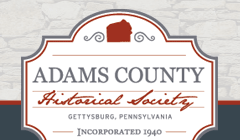Document Type
Article
Abstract
Black labor operating under various degrees of freedom found a suitable working environment, if not a safe haven, in several iron forges of South Central Pennsylvania, from the late 1790s through the 1850s. Primary accounts indicate that two in particular, Pine Grove Furnace of Cumberland County, and Caledonia Furnace of Franklin County, harbored runaway slaves to augment their work force. Pine Grove records, dating from 1789 – 1801, specify names of “negro” employees, verifying that black labor coexisted with white, but day books, journals, and ledgers do not denote status.1 Whether they were free men, or slaves rented out by Pennsylvania slave owners, or runaways from the South cannot be gleaned from the day books. All three combinations were possible, especially in the 1790s. Circumstantial evidence suggests that escaped slaves did bolster the ranks of both forges until 1860. With renowned abolitionist Thaddeus Stevens in ownership of Caledonia, and proprietors sympathetic to the same cause at Pine Grove, the environment favored Underground Railroad activity. When this circumstance is coupled with the presence of a Quaker Meeting House in northern Adams County, and the recognition that both forges were within a thirty mile radius of the Maryland slave-state border, then a recipe existed for hide-outs to be employed in area furnaces. [excerpt]
Recommended Citation
Harman, Troy D.
(2008)
"Black Labor at Pine Grove & Caledonia Furnaces, 1789-1860,"
Adams County History: Vol. 14, Article 4.
Available at:
https://cupola.gettysburg.edu/ach/vol14/iss1/4
Included in
African American Studies Commons, Labor History Commons, Social History Commons, United States History Commons
